
This is a series of posts that follow Ultrarunner, Gareth Kilshaw's, preparations as he prepared for his challenge to run from Liverpool to Leeds.
Despite the string of ultras under his belt, Gareth had never actually followed a training plan.
Fortunately, his running buddy Nicola Bruce decided to step in.
“He’d generally just go out for a run and see what happened,” says Nick. “This time, he had to get serious about what he needed to achieve.”
But with a 127-mile run looming, a bit of structure was called for.
An ultra veteran herself (she completed the GB Ultras 215-mile run across Scotland) Nicola explains that training for an ultra-marathon is quite different from training for a standard marathon.
But because Gareth was already an accomplished ultra-runner, the aim was to more about optimising his fitness.
“Twelve weeks sounds like not a lot of time for this kind of distance, but it’s not like we’re starting from scratch.
It’s more like 12 weeks of tweaking rather than training for an ultra marathon.”
The 12-Week Training Plan
Nicola’s training plan for Gareth comprised three phases:
Of course, many of their runs had actually ended up being longer than what had been written into the plan - including one 55-mile jaunt through Scotland.
As Nicola says, every step counts.
“It’s not just 127 miles - it’s thousands of miles that go into it,” she says.
Phase 1: Interval training
Nicola began Gareth’s plan with the phase least specific to the race itself. For an ultra-marathon, this meant short and fast intervals.
“We needed to build on that fitness, but it’s not going to be used in the race because it’s a hundred and twenty-seven miles,” she says.
Gareth’s interval training involved a range of 45-minute and 60-minute easy runs. These runs were interspersed with 6x 3-minute running intervals, with each interval followed by another three minutes of easy running.
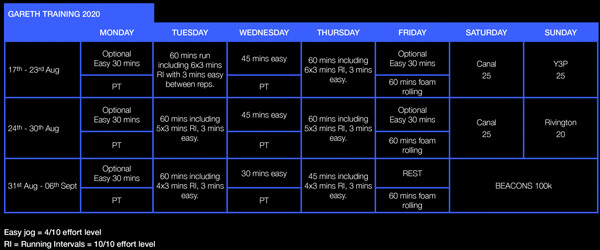
Phase 2: Tempo running
Tempo running generally means longer, slower intervals at a ‘comfortably hard’ pace. In other words, running at a pace faster than “moderate” but not strenuous. Nicola explains that this would help Gareth to run faster for longer.
“We’ve got a time in mind that we’d like him to do it in, so we’ve set the target for that. His fitness has gone through the roof in this phase of training.”
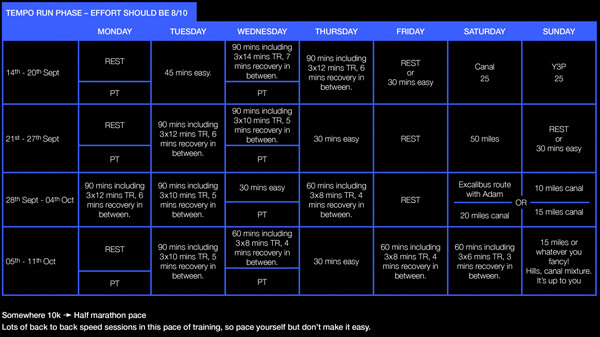
Phase 3: Sustained steady running
The final phase of Gareth’s training is the steady run. This is all about getting his endurance fitness up.
‘Steady running’ could be described as easier than running at the lactate threshold without being too easy. The idea is to improve the aerobic system by optimizing power output while sparing glycogen stores. This can help to make every effort level more efficient.
Nicola had to explain to Gareth that this phase wouldn’t feel particularly challenging - but it was still necessary to add to his fitness.
“Long-distance is where his strength is - it’s what we do,” she says. “But we needed the three different phases to improve his overall fitness. That’s put him in a really good position for the start line.”
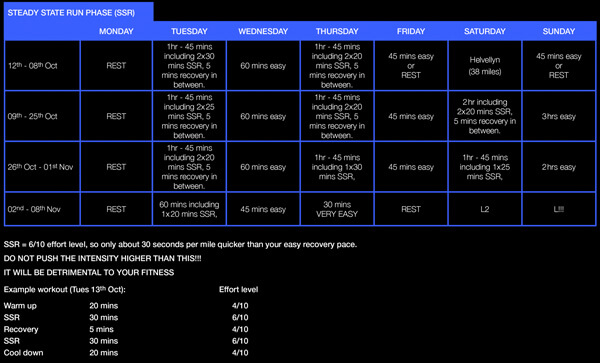
Balancing training with life
Gareth works four 12-hour nights a week on the docks. He also has a family at home that he wants to spend time with.
This meant his training plan not only had to fit in around his demanding work schedule but also his personal life.
Being a close friend of Gareth and his family, Nicola knew how much time he was willing to give to training and adapted his plan to suit.
Recovery runs, for example, could be swapped out for a long walk with Carole.
“You’ve got to be flexible, otherwise, you’re going to lose the enjoyment of it and it’s going to become like a job,” Nicola says.
Thanks to Nicola’s guidance, Gareth has had more time available for his family, but has also felt his fitness improve.
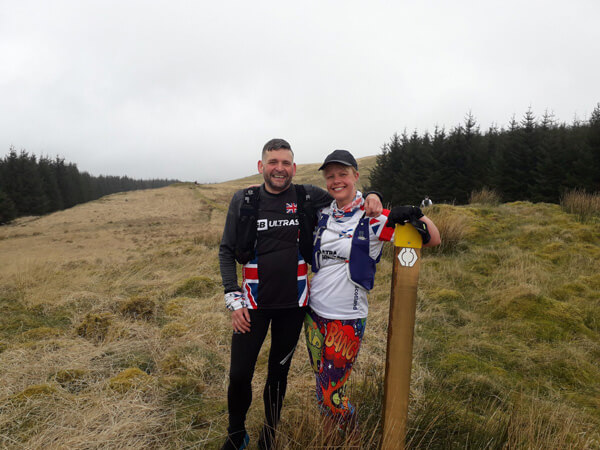
The psychological element
As daunting as the distance might seem, Gareth is “definitely very strong”, says Nicola.
“It’s so personal to him. He’s running from where he works to where his daughter lives, and it’s the canal he’s trained on initially as a runner. It all just means so much to him - it’s in his heart, so I think he’ll draw on that.”
The fundraising element of the mission has added to his determination and confidence.
“He feels like a lot of people are relying on him for this, so that’s spurring him on. He thrives on pressure.”
Having seen Gareth through thousands of miles before, she knows he has what it takes.
“He can laugh his way out of anything. We’ve had some ridiculous things happen to us on the races, but you just keep going.”
“There’s not a doubt in my mind he’s going to do it. I know he’s going to cross that finish line.”
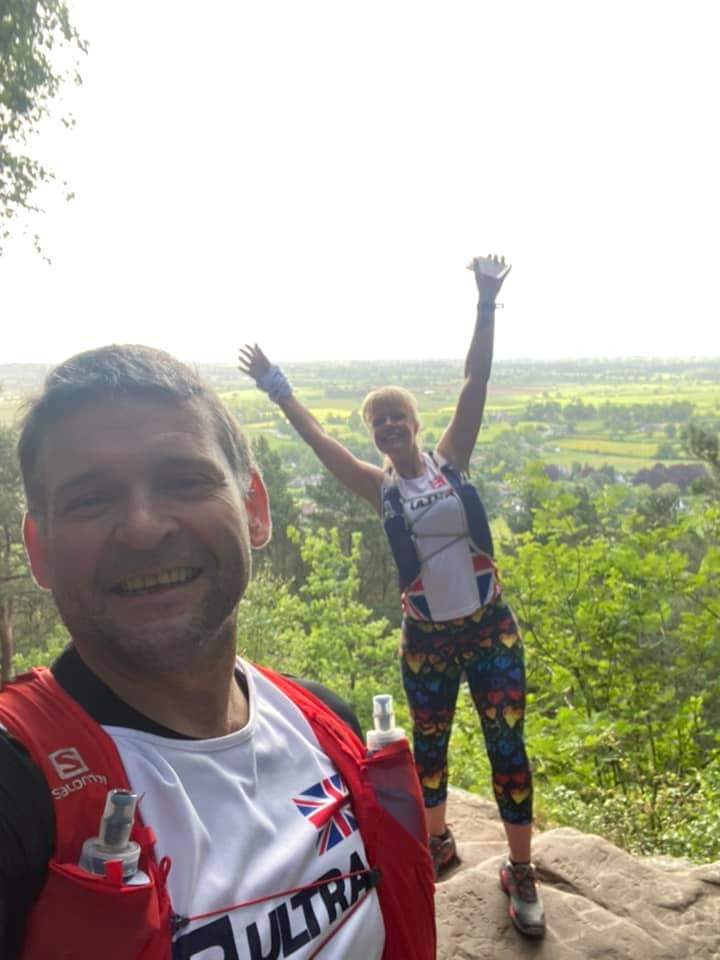
Read More:
Nicola Bruce – Training plan designer and “chief ass kicker”
Recovery – The yin to the yang. How Gareth balanced recovery, running & life
Kit Choice – From trainers to under-pants. Hydrating to anti-chaffing
Lessons Learned – Errors made and never repeated. Take note!

 British Triathlon: Recovery Questions Answered
British Triathlon: Recovery Questions Answered
 The Injury Risk Equation
The Injury Risk Equation
 LJMU Study Findings
LJMU Study Findings
 What are shin splints?
What are shin splints?
 How to treat shin splints [2021]
How to treat shin splints [2021]
No Thanks – I’ll pay full price
Close Window
Close Window
[…] do you get when you add up 12 weeks of training, a new diet, a recovery plan, targeted strength work, the “Carlsberg” of crews, 30+ […]
[…] have followed Gareth’s preparations. The training plan, fueling plan and recovery plan leading up to the […]
[…] Training Plan: Preparing for 127-miles (make that 130!) […]
[…] https://riixo.com/gareth-127-training-plan/ […]
[…] speak to Gareth and his team, look at the training plan, recovery protocols, strength work and his […]
[…] Gareth’s plans he was keen to join the team. He designed a recovery plan to fit into Gareth’s training and his home-life to maximise his […]
[…] been following his thorough preparation – training, recovery, kit selection, strength & conditioning work – and in this post we speak to […]
[…] preparation for his ultramarathon, Gareth has looked at every detail. Of course there is the training plan but he has also considered his strength training, his nutrition, how he has recovered and even how […]
[…] documented some of his preparations, his training, nutrition, strength & conditioning and recovery. In this post we look at the kit that Gareth […]
[…] can read about the team, the training plan, his recovery protocols, nutrition and his kit selection […]